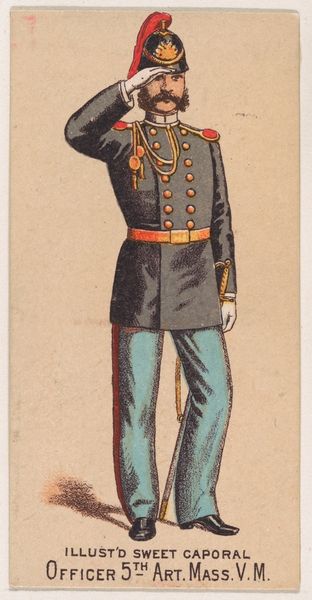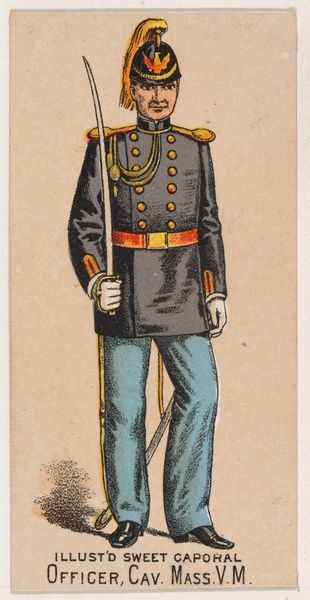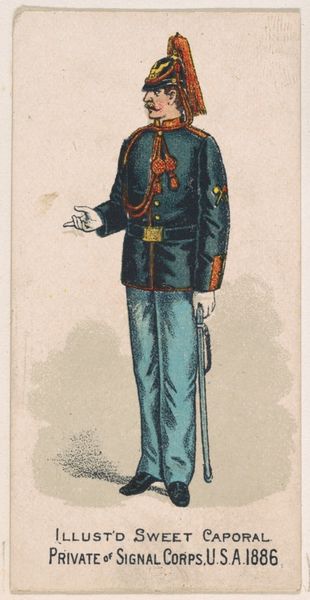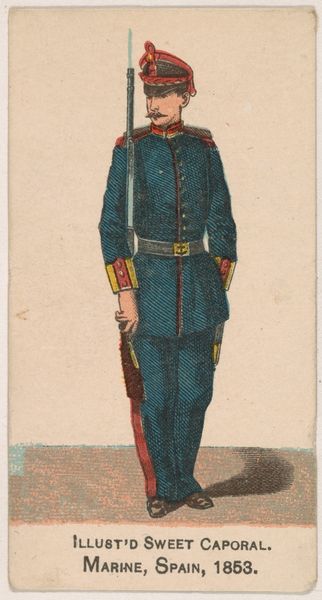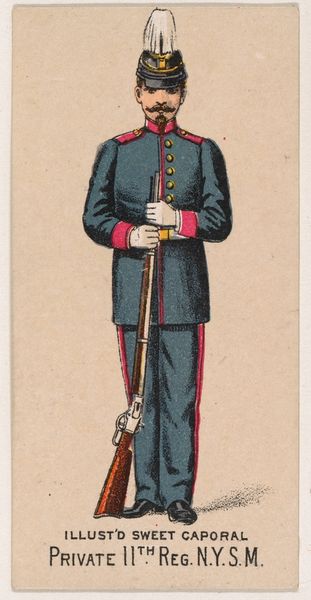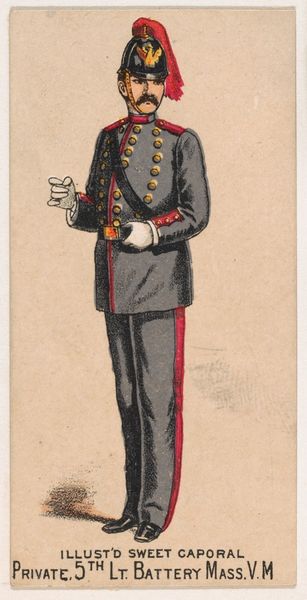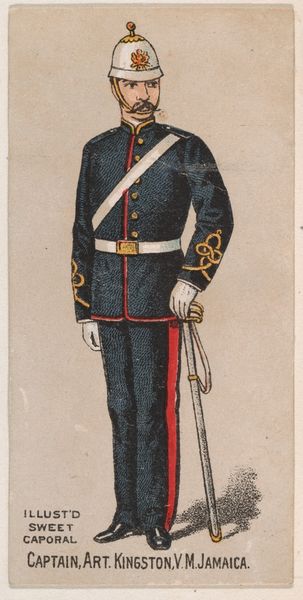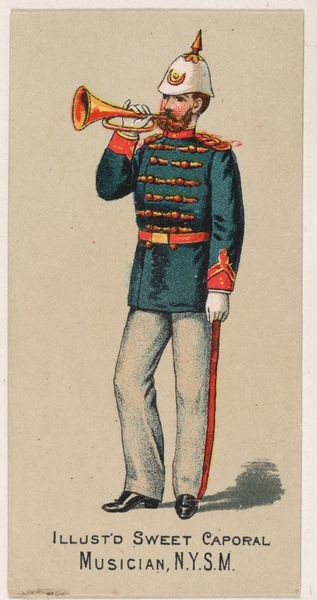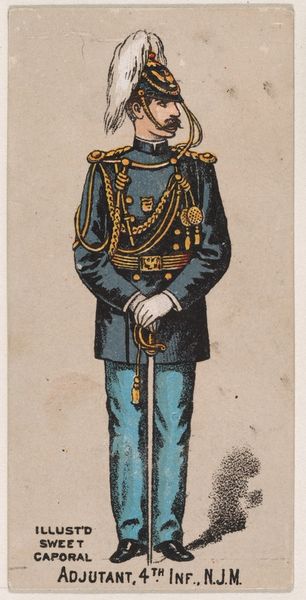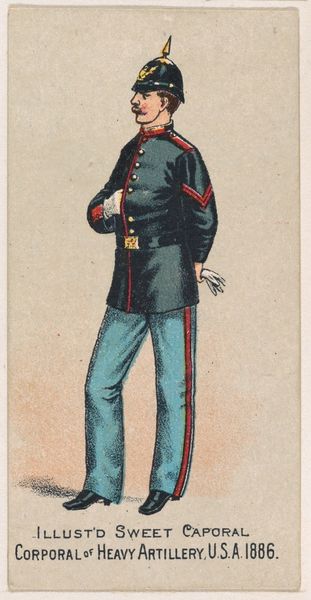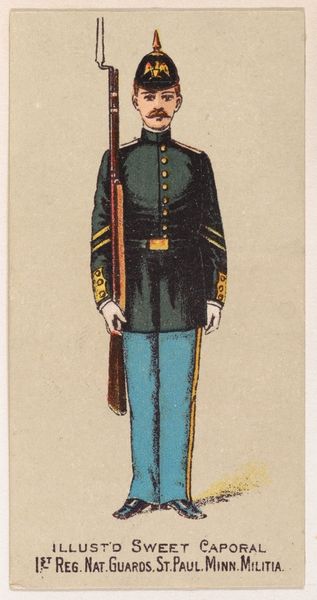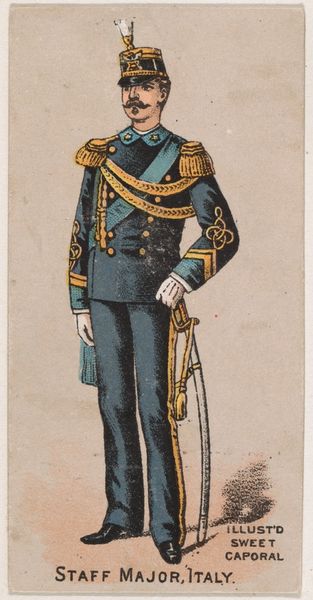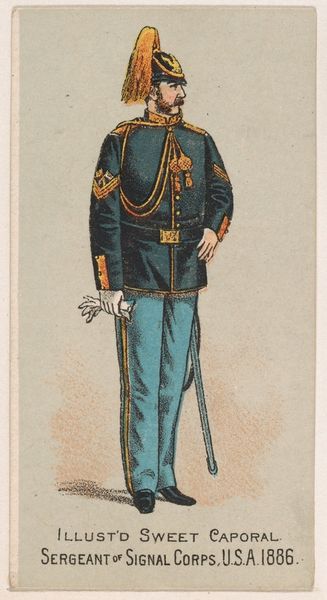
Private, 2nd Battery, New York State Militia, from the Military Series (N224) issued by Kinney Tobacco Company to promote Sweet Caporal Cigarettes 1888
0:00
0:00
drawing, print
#
portrait
#
drawing
# print
#
caricature
#
caricature
#
cartoon sketch
#
men
#
genre-painting
#
academic-art
Dimensions: Sheet: 2 3/4 × 1 1/2 in. (7 × 3.8 cm)
Copyright: Public Domain
Curator: Look at the delicate lithography of "Private, 2nd Battery, New York State Militia," a print from 1888 by Kinney Brothers Tobacco Company. The subject exudes military pageantry of the era. Editor: Well, "pageantry" is one word. I immediately noticed the slightly caricatured presentation, the stiffness of the pose, like a puppet, it’s more about promotion, I would guess, than military prestige? Curator: Quite right! It’s a promotional item for Sweet Caporal cigarettes, one in a series. What I find compelling is the production – consider the industrial lithographic process, transforming this individual into a reproducible commodity, packaged with tobacco. Editor: Yes, the act of distribution here, I imagine children and adults alike collecting these, trading them; what was the perceived social value in disseminating these types of images? Who did it serve? Curator: These were collected, traded, and pasted into albums. It fed a Victorian appetite for collecting and display. Think about it; the circulation of imagery influencing perceptions, fostering patriotic sentiment... were there other objectives, in turn? Editor: The composition itself draws from an earlier tradition of formal portraiture but is repurposed here for commercial means; a fascinating example of the shifting functions of art and imagery in late 19th century culture. The cigarette cards themselves are physical objects, commodities produced and consumed, aren’t they? Curator: Precisely. The tactile experience is crucial to grasp. Cheap paper stock. Printed en masse in eye-catching hues to promote brand visibility. Not ‘high’ art, perhaps, but significant. How did these visual strategies then build perception and behavior? Editor: I am left pondering about the role of these objects within the broader visual culture of the time, and its lasting echoes in our society today. Curator: Yes. For me, thinking of the labor behind its mass creation gives depth to the historical narrative of this somewhat unassuming piece.
Comments
No comments
Be the first to comment and join the conversation on the ultimate creative platform.
